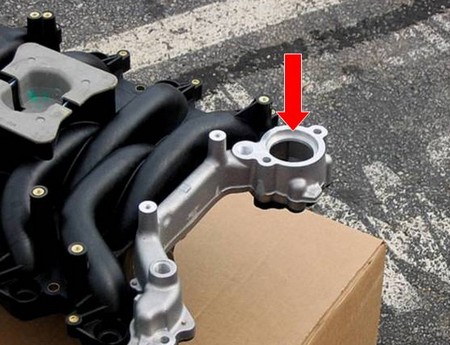A cooling-system thermostat that sticks in a closed or partially closed position, preventing hot coolant from flowing through the radiator, will cause engine temperature to rise. If the thermostat sticks in the fully closed position, coolant will boil and the engine will overheat. If the thermostat sticks in a partially closed position, the engine may not overheat. However, excessive heat can cause the engine to detonate and/or diesel.

Here’s how to replace the thermostat:
- With the engine cold, place a clean pan under the radiator drain valve (petcock), remove the radiator cap, and open the valve to allow coolant to drain.
- Discard used coolant in an environmentally safe way by pouring it into glass or plastic containers with screw-on caps. Label the containers “TOXIC LIQUID: AUTO COOLANT” and call your local environmental or recycling officials for disposal instructions.
- Close the petcock.
- Unscrew the bolts holding the thermostat housing together.
- Before removing the thermostat, make a sketch that notes distinguishing marks on the thermostat and gasket and their positions relative to the housing. The sketch will help you install the new thermostat in the same way so as to prevent overheating.
- Remove the thermostat and gasket from the housing. Discard the gasket, but keep the thermostat for the time being so you can take it to an auto parts store and buy a new one of the same type that is rated to open at the same temperature. Make sure a gasket comes with the new thermostat.
- Use a wire brush to clean the thermostat housing and housing cover.
- Following your sketch, install the new thermostat and gasket.
- Position the thermostat housing and cover. Insert and tighten the bolts.
- Install fresh coolant consisting of a 50:50 mixture of ethylene glycol antifreeze and water unless the ambient temperature in your region requires a stronger solution.
- Start the engine, let it run for a few minutes, turn it off, and check for a coolant leak around the thermostat housing. If coolant is leaking, further tighten the thermostat housing bolts.









